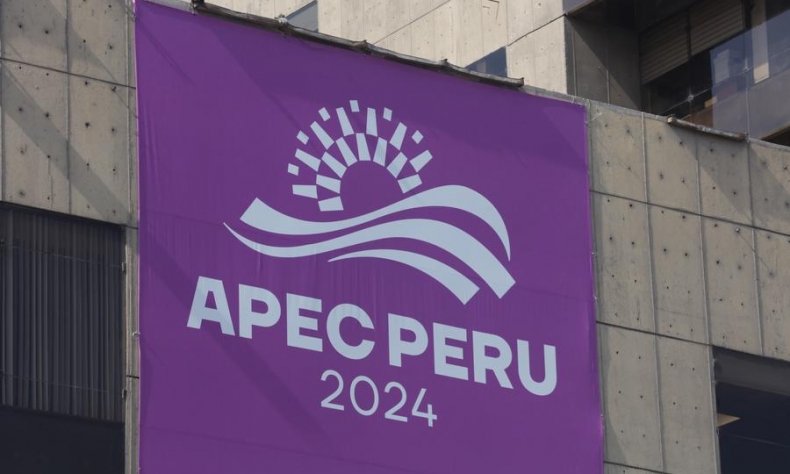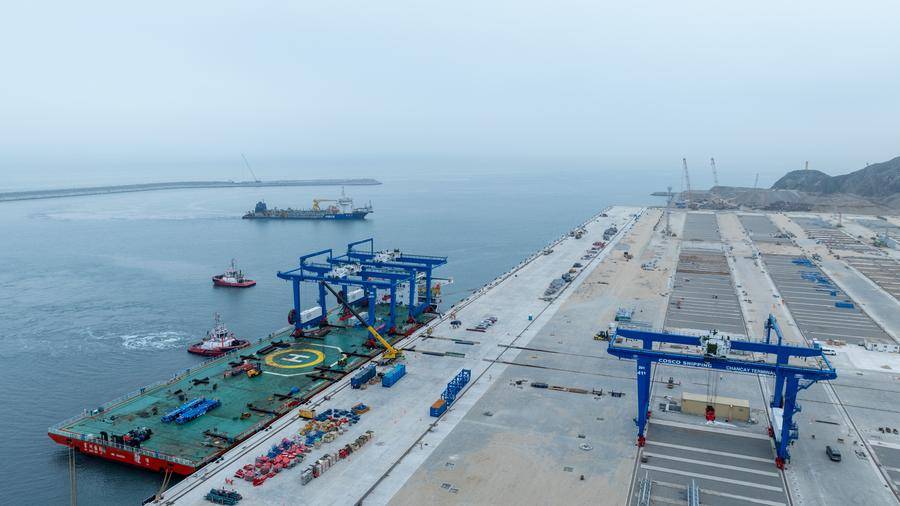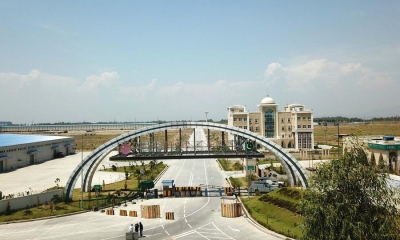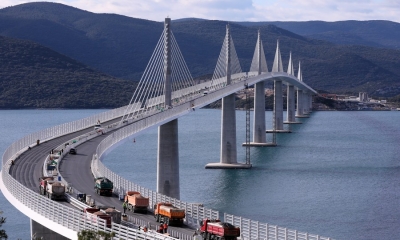China’s Economic Vision for 31st APEC 2024

China welcomes participation by all parties in the Global Development Initiative (GDI) to deepen cooperation in poverty reduction, food security, industrialization and finance development, to build a global community of development.
China’s development vision for Asia Pacific Economic Cooperation (APEC), the largest transpacific 21-member economic alliance, is based on building a peaceful and harmonious Asia-Pacific community to foster free, fair and open trade that champions the cause of economic integration, synchronization of regulatory frameworks, market liberalization, conducive investment climate, multilateralism, multipolarity and global governance with the spirit of partnership.
China’s economic vision will be a beacon of light at the 31st APEC Economic Leaders’ Meeting, themed “Empower, Include, Grow,” set to take place in Lima, Peru, on November 15-16.
President Xi Jinping will attend the APEC Economic Leaders’ Meeting to highlight how APEC can transform lives of people of the region by promoting balanced, inclusive, sustainable, innovative and secure growth, and by accelerating regional economic integration.
China’s economic perspective that anchors on openness and inclusive development is a way forward for APEC’s 21 member economies accounting for more than 60 percent of world GDP, 49 percent of world merchandise trade, and nearly 40 percent of the world population.
As manifested by China’s regional and global experience, an economy thrives in openness and withers in seclusion. For APEC’s economic ascendancy, China emphasises the promotion of free and open trade and investment, supports and strengthens the WTO-centered multilateral trading regime, and keeps global industrial and supply chains open and stable.
As per President Xi’s economic approach, the pathway to thrive collectively by all 21members of APEC lies in saying no to any attempt to politicize, weaponize, or impose security implications on economic and trade issues.
China has shaped the Belt and Road Initiative (BRI) into a global connectivity program. It applies the highest standards in implementing the Regional Comprehensive Economic Partnership Agreement (RCEP) and has taken proactive steps to align its economic and trade rules with the high standards of the Comprehensive and Progressive Agreement for Trans-Pacific Partnership (CPTPP) and the Digital Economic Partnership Agreement (DEPA), to accelerate the process of its accession to the CPTPP and DEPA. Similarly, China is working with APEC to draw a new blueprint of development.

Given the increasingly grave challenges such as climate change and natural disasters, China-APEC’ action plan is to promote harmony between man and nature, and accelerate the transition to green and low-carbon development.
China remains as determined as ever to pursue green development that prioritizes eco-environmental conservation and protection. It is making active yet prudent moves toward its goal of carbon peak and carbon neutrality, and is accelerating its transition to green development. Beijing has put forward initiatives for cooperation between APEC member economies in green agriculture, sustainable city development, green and low-carbon energy transition, and marine pollution prevention and control. All such initiatives aim to build a clean and beautiful Asia-Pacific region.
Global development now faces severe challenges and the development divide is getting wider. As per China’s vision, APEC is necessitated to fully implement the UN 2030 Agenda for Sustainable Development, and bring development back to the forefront of the international agenda.
APEC’s stakeholders need to develop greater synergy in development strategies and work together to resolve the global development deficit. China welcomes participation by all parties in the Global Development Initiative (GDI) to deepen cooperation in poverty reduction, food security, industrialization and finance development, to build a global community of development so that the fruits of modernization are shared by people across the world. China will continue to support APEC in its economic and technical cooperation and work together with other member economies to make the “cake” of Asia-Pacific development bigger.
Thirty years ago, after the end of the Cold War, leaders in the Asia-Pacific region unanimously agreed to transcend the old thinking of group confrontation to work together to deepen regional economic cooperation and integration, and commit to building a dynamic, harmonious and prosperous Asia-Pacific family. The Asia-Pacific region, which is now an engine of global growth, thus has greater responsibility. China will usher in another “golden 30 years” for the region, and bring out the best of APEC in this process.
Innovation is a strong driver of development. China visualizes APEC as following the trends of scientific and technological advancement, proactively promoting exchanges and cooperation in science and technology, and working together to create an open, fair, equitable and non-discriminatory environment for scientific and technological progress.
APEC 2024 will also accelerate digital transformation, narrow the digital divide, redouble efforts to implement the APEC Internet and Digital Economy Roadmap, support the application of big data, cloud computing, artificial intelligence, quantum computing and other new technologies, and create new momentum and new drivers of growth in the Asia-Pacific region.
China remains committed to its strategy for driving growth and development through innovation. China is advancing both its digital industry and the digital transformation of traditional industries. China has put forward several initiatives to promote regional growth and development through digital empowerment, including digital technology-driven rural development, corporate digital identity, and transition to a green and low-carbon economy through the application of digital technologies.
China is eager to work with all parties to comprehensively implement the APEC Putrajaya Vision 2040 and push for positive outcomes from this meeting, which it hopes will inject new impetus into regional economic integration and promote shared, balanced and sustainable growth. Beijing calls for parties in the Asia-Pacific to join hands and work together to build an Asia-Pacific community with a shared future.
The article reflects the author’s opinions, and not necessarily the views of China Focus.
 Facebook
Facebook
 Twitter
Twitter
 Linkedin
Linkedin
 Google +
Google +






